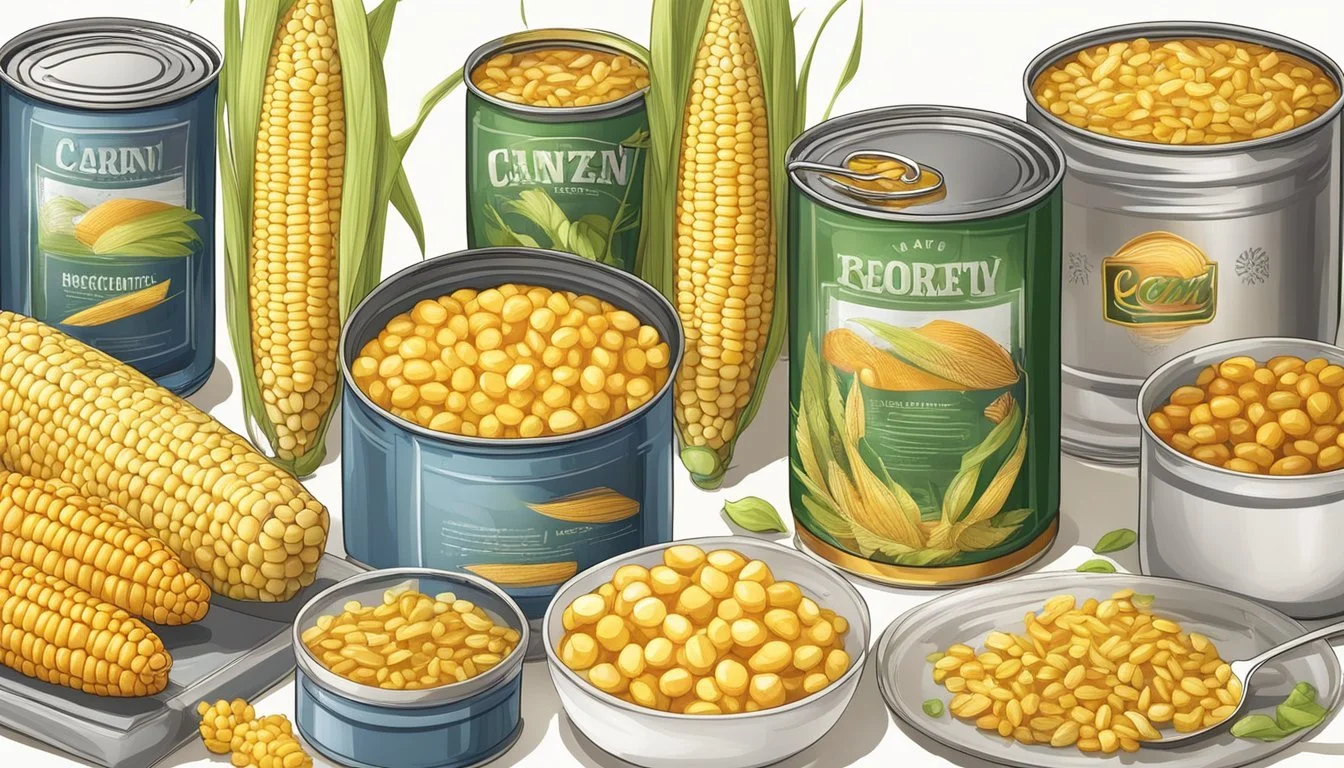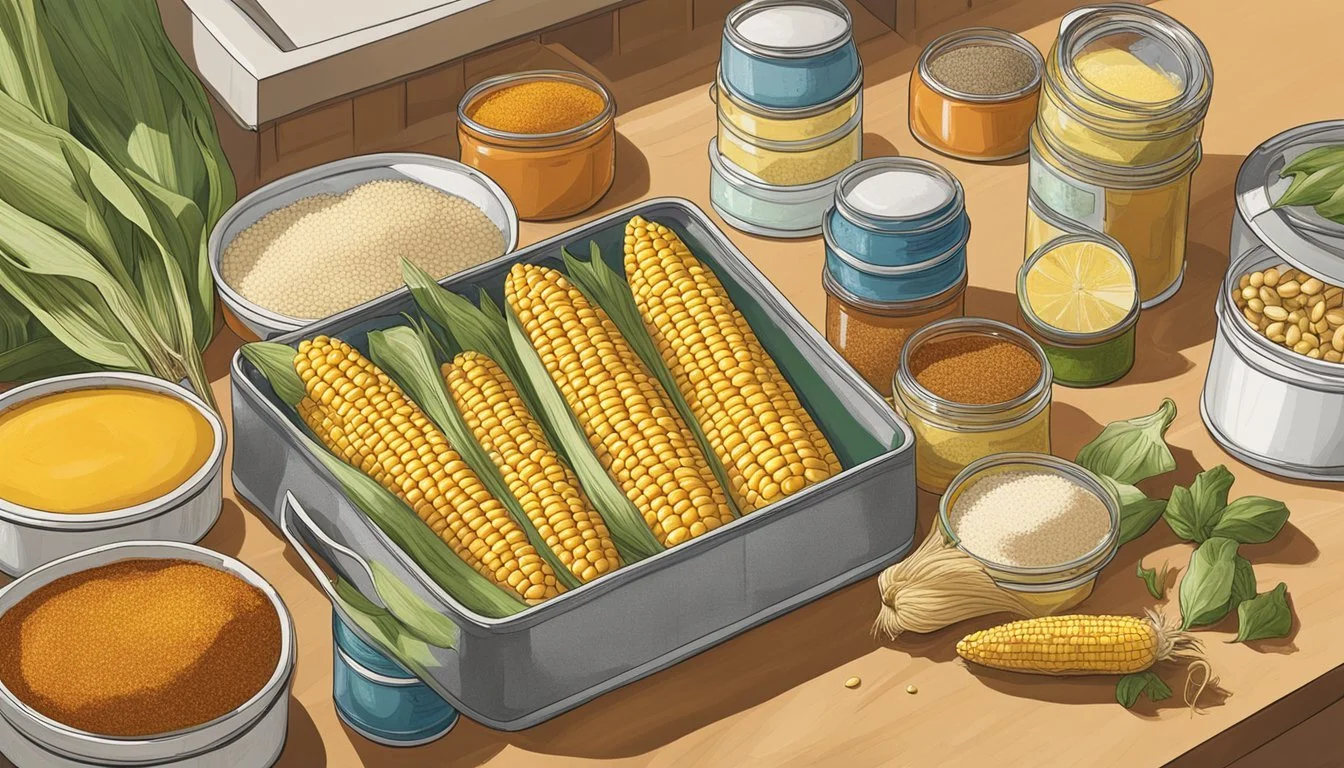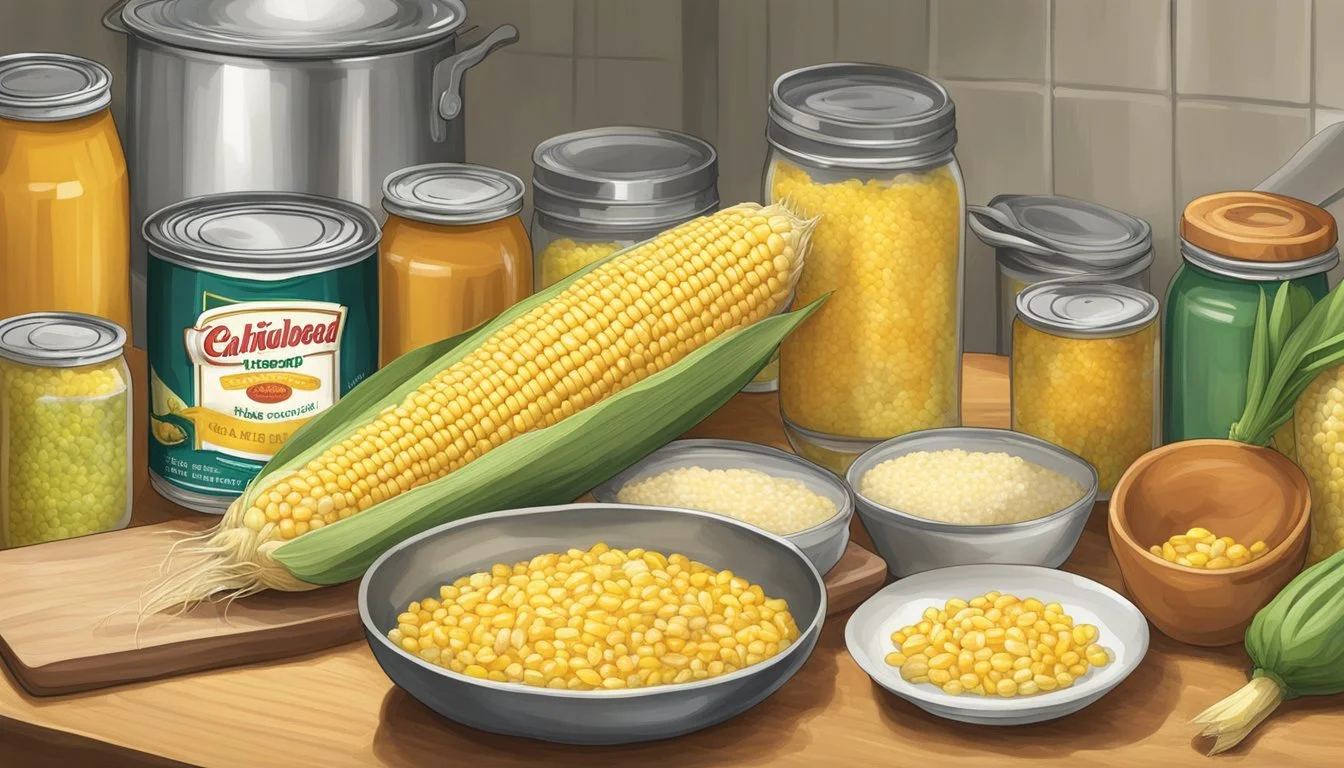Canned Corn Recipes Beyond Corn on the Cob
Creative Twists on Classic Dishes
Canned corn is a staple in many pantries due to its convenience, shelf-stability, and versatility. This unassuming ingredient often serves as a simple side dish, but it has the potential to be so much more. With an array of recipes available, canned corn can be transformed into a range of flavorful dishes that extend far beyond the basic corn on the cob. These recipes offer novel ideas for integrating canned corn into meals, providing both ease and a delicious taste that belies the simplicity of its canned origins.
Creative cooks have leveraged the sweet, tender kernels of canned corn to elevate numerous dishes, from hearty chowders to zesty salsas. The mild flavor of corn complements a variety of ingredients, making it an ideal component in diverse culinary traditions. Be it in a comforting corn chowder paired with leftover turkey, a lively black bean and corn salsa with a dash of cayenne pepper, or a flavorful sauté with a seasoning of Tajín, canned corn plays a pivotal role in adding both texture and taste to everyday meals.
Moreover, the efficiency of using canned corn cannot be overstated. It bypasses the need for shucking and cooking fresh corn, allowing for quick and easy meal preparations. Whether one is looking to craft a simple side dish to accompany grilled meats or seeking to enrich soups and stews with its sweetness, canned corn provides a delightful solution that is both time-saving and satisfying for any level of culinary expertise.
Nutritional Guide to Canned Corn
In evaluating canned corn as a component of a balanced diet, it is important to consider its nutritional makeup, which includes its fiber content and array of vitamins and minerals.
Understanding Canned Corn Nutrition
Canned corn provides an array of essential nutrients albeit in different quantities compared to its fresh counterpart. A notable divergence lies in its sodium content, often higher due to the canning process. The calorie content in canned corn is moderate, making it a reasonable addition to a calorie-conscious diet.
Calories: Approximately 60-80 per half-cup serving
Saturated Fat: Minimal; generally less than 1 gram per serving
Cholesterol: Naturally cholesterol-free
Sodium: Varies, typically around 200-300mg per serving (rinsing can reduce sodium content)
Benefits of Fiber in Corn
Canned corn remains a valuable source of dietary fiber, which aids in digestion and can help manage blood sugar levels.
Dietary Fiber: About 2 grams per half-cup serving
Corn is a gluten-free grain, making it suitable for those with gluten intolerance or celiac disease.
Vitamins and Minerals in Corn
Even in its canned form, corn is rich in essential vitamins and minerals, though the quantities may be affected by the canning process.
Vitamin C: Aids in immune function and collagen production
Vitamin A: Important for vision and immune health
Calcium: Essential for bone health; present in smaller amounts
Potassium: Key for muscle function and cardiovascular health
Iron: Necessary for blood production; present in trace amounts
These vitamins and minerals contribute to the overall nutritional value of canned corn, supporting various bodily functions.
Delicious Canned Corn Recipes
Canned corn is a versatile pantry staple that can transform into a flavorful component of many dishes. From side dishes that offer a pop of sweetness and texture to hearty main courses brimming with vegetables and protein, canned corn can be a key ingredient in a surprisingly wide range of recipes.
Canned Corn as a Side Dish
Simple yet satisfying, canned corn side dishes are a perfect way to complement a meal. Corn fritters are a crispy delight, combining corn kernels with a lightly seasoned batter and frying them to golden perfection. Another effortless option includes a warm corn casserole, which pairs the sweetness of corn with rich cream and a bit of crunch on top—usually involving a sprinkle of bread crumbs or crushed crackers. An easy Mexican cornbread can leverage the sweet kernels too, alongside jalapenos and cheese for a Tex-Mex kick.
Main Dishes with Canned Corn
For a protein-rich entree, consider a spicy corn carbonara, which typically includes bacon or pancetta, plenty of cracked black pepper, and the sweet burst of corn. Alternatively, canned corn joins forces with shrimp, tomatoes, and bell peppers in a vibrant stir-fry or taco filling. Poultry and meat lovers may enjoy a corn and black bean salsa over grilled chicken or steak, delivering both color and flavor with the freshness of lime juice and cilantro in the mix.
Canned Corn in Soups and Stews
Corn chowder is a classic, and utilizing canned corn makes for a quick preparation. This creamy soup combines the sweetness of corn with potatoes, onions, and often bacon or ham to create a comforting bowlful. Turkey corn chowder can be a delicious post-Thanksgiving twist, making use of leftover turkey. For something with more of a kick, a taco soup integrates canned corn with ground beef or turkey, black beans, tomatoes, and a blend of Tex-Mex spices.
Salads Featuring Canned Corn
A bright corn salad can be a fresh side dish or a light meal. It typically features corn tossed with ingredients like juicy tomatoes, creamy avocado, and sometimes beans for added substance. For a unique twist, combine corn kernels with zucchini, basil, and a tangy vinaigrette. Or, for a bean salad with more heft, mix black beans, corn, finely chopped red bell pepper, and a zesty lime dressing.
Canned Corn in Vegetarian and Vegan Meals
Vegetarians and vegans can incorporate canned corn into a multitude of dishes. Corn fritters or corn pudding are satisfying options where corn plays a starring role. A vegetarian chili (What wine goes well with vegetarian chili?) rich with vegetables, including corn, tomatoes, onions, and bell peppers, provides a hearty and warming meal. For a vegan-friendly appetizer, consider a chipotle corn salsa served with tortilla chips, or prepare a cheesy corn dip using plant-based cheese alternatives.
How to Cook with Canned Corn
Cooking with canned corn offers the advantage of convenience while still allowing for a range of flavors and dishes. This section will outline effective preparation techniques, optimal cooking times and methods, and how to enhance flavors with spices and herbs.
Preparation Techniques for Canned Corn
One should start by draining the liquid from the can. This helps to remove excess sodium and gives one the opportunity to season the corn to taste. Canned corn can be rinsed briefly under cold water to further eliminate any preservatives. For added flavor, one may sauté the corn with butter before incorporating it into dishes.
Cooking Times and Methods
Stovetop: A medium skillet or saucepan is ideal for heating canned corn. After adding a small amount of water and some salted butter, one should create a simmer over medium heat and then reduce the heat, allowing the corn to warm for just a few minutes. This method retains the corn's texture and brings out its natural sweetness.
Table of Cooking Times:
Method Cooking Time Simmering 2-3 minutes Sautéing 5-7 minutes Incorporation (into soups or casseroles) As per recipe
Incorporating Spices and Herbs
Adding spices and herbs can transform the flavor profile of canned corn. A simple addition of salt and pepper is effective, but for more complexity, one could consider garlic for a savory kick or basil and sage for an aromatic touch. For a zesty note, lime juice complements the sweetness of the corn. Spices and herbs should be added with a light hand to avoid overpowering the corn's natural flavor.
Suggested Spice and Herb Pairings:
Salt and Pepper: Classic and essential for basic seasoning.
Butter and Garlic: For a richer taste; use minced garlic sautéed in butter.
Lime Juice and Basil: For a fresh, citrusy profile suitable for summer salads.
Sage: Subtle and earthy, ideal for hearty dishes.
Health and Dietary Considerations
When incorporating canned corn into various recipes, individuals must be mindful of its impact on specific dietary needs. Canned corn can be a part of a diverse range of diets, including low-calorie and gluten-free meal plans, but attention should be given to its sodium content.
Canned Corn in Low-Calorie Diets
Canned corn is a versatile ingredient with a moderate calorie count, which can fit well within low-calorie diets. A half-cup serving of canned corn typically contains around 60-80 calories, with minimal fat. It’s also a source of fiber, aiding in satiety without adding significant calories, making it ideal for weight management. Individuals should opt for variants with no added sugar or minimal syrup content to maintain low-calorie intake.
Calories: Approximately 60-80 per half-cup
Fat: Generally low
Gluten-Free Cooking with Canned Corn
For those with celiac disease or gluten sensitivity, canned corn is an excellent gluten-free ingredient that can enrich a variety of dishes. Since it is naturally free of gluten, it serves as a nutritious alternative to gluten-containing grains. To ensure the product is truly gluten-free, consumers are advised to check for cross-contamination warnings or seals indicating gluten-free certification on the packaging.
Gluten-free: Yes, but check for cross-contamination
Fiber content: Good source of dietary fiber
Managing Sodium Intake
Canned corn often contains added sodium, which can be a concern for those monitoring their sodium intake for health reasons. Consumers should look for labels stating “no salt added” or “low sodium” to manage and reduce dietary sodium levels. Draining and rinsing canned corn can also help lower the sodium content by as much as 40%.
Sodium content: Can be high, but reduced by draining and rinsing
Health consideration: Opt for low-sodium or no added salt options
Storing and Preserving Canned Corn
Canned corn is a staple that can last well and be a versatile ingredient. Proper storage and preservation techniques ensure that it remains safe and tasty for future meals.
The Shelf Life of Canned Corn
Canned corn, when stored in a cool, dry place such as a pantry, typically has a shelf life of 1-4 years before it is opened. However, consumers should check the best-by date on the can for the most accurate timeframe. After opening, canned corn should be transferred to a sealed container and can be kept in the refrigerator for 3 to 4 days.
Freezing and Thawing Tips
For those who want to extend the shelf life of their canned corn beyond the refrigerator timeframe:
Freezing: One can transfer the corn into an airtight container or freezer bag, removing as much air as possible before sealing. This helps prevent freezer burn.
Labeling: Clearly label the container with the freezing date. Frozen canned corn can be stored for up to 6 months in the freezer.
Thawing: When ready to use, thaw the corn in the refrigerator overnight, or defrost in the microwave using the "defrost" setting. Never refreeze previously frozen canned corn.
Canned Corn Across Cultures
Canned corn holds a versatile position in kitchens around the world, adapting to the flavors and culinary techniques of different cuisines. From American comfort dishes to global culinary experiments, its convenience and year-round availability facilitate a wide array of dishes.
Canned Corn in American Cuisine
In American cooking, canned corn is often prized for its contribution to comfort food. It appears not just as a side but as a main ingredient in soups and casseroles. For example, a Crockpot Chicken Corn Chowder combines canned corn with chicken, potatoes, and cream to create a hearty dish that's particularly popular in colder months.
In the realm of baking, sweet and fluffy cornbread incorporates the sweetness of canned corn to enrich its moist texture. A tip for baking cornbread to perfection is to preheat the pan with butter, ensuring a golden crust and a tender crumb.
Tex-Mex cuisine embraces canned corn for its ability to absorb spices and blend into vibrant dishes. It becomes the star in a vibrant Mexican corn dip, which combines it with lime juice, chili powder, and cheese, perfectly capturing the bold flavors typical of the cuisine.
Global Inspirations Using Canned Corn
Beyond American borders, canned corn is a staple in many pantries across the globe. Recipes like taco soup draw inspiration from Mexican flavors, using canned corn as a key ingredient alongside black beans, tomatoes, and a medley of spices to achieve a rich and warming dish.
Internationally, canned corn can be found in versatile roles, whether stirred into Asian-style fried rice, blended into South American salsa, or mixed into an African maize porridge. Each culture embraces canned corn, adding their unique spin with local herbs, spices, and culinary techniques, showcasing its ability to transcend cultural boundaries.
Kitchen Essentials for Canned Corn Recipes
Crafting delectable dishes with canned corn requires not just a creative culinary approach, but also the right kitchen equipment. Ensuring you have the proper tools and selecting the best canned corn are pivotal steps in achieving culinary success.
Must-Have Tools and Utensils
When working with canned corn, a set of standard kitchen utensils and appliances can make the process efficient and enjoyable. A can opener is, of course, indispensable for accessing the delicious kernels. It's advisable to have a durable and comfortable model that can handle repetitive use.
Once the can is open, a colander or strainer is crucial for draining the corn of its liquid. For cooking, a cast-iron skillet is highly recommended due to its even heat distribution and versatility; it is ideal for recipes where corn needs to be sautéed or roasted to achieve a deeper flavor.
Here's a quick checklist of other essential tools a cook might need:
Knives: A sharp chef's knife for chopping ingredients to pair with the corn.
Mixing bowls: Various sizes for combining corn with other ingredients.
Measuring cups and spoons: Precision ensures flavor consistency.
Wooden spoon or spatula: For stirring the corn mixture without scratching cookware.
Choosing Quality Canned Corn
Selecting high-quality canned corn is as crucial as having the right tools. Not all canned corn is created equal; a discerning cook looks for kernels that are crisp, tender, and well-preserved without excessive added sugars or salt.
A reliable brand often guarantees the following:
Uniformly sized kernels: Indicates careful processing and quality control.
Minimal additives: Look for corn with just water and a bit of salt.
BPA-free cans: To avoid potential health risks associated with BPA-lined cans.
When a recipe calls for a twist on taste and texture, one might opt for cream-style canned corn or varieties with added peppers for some heat. Always check the expiration date to ensure freshness and the best possible flavor outcome for your culinary creations.






